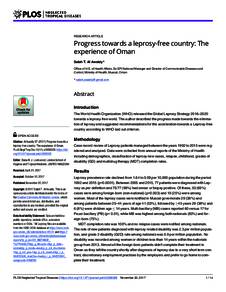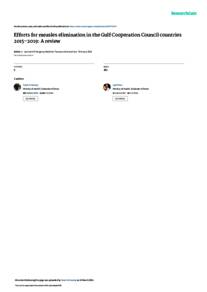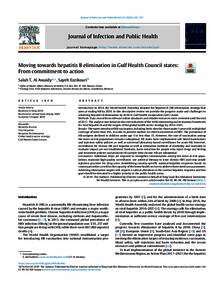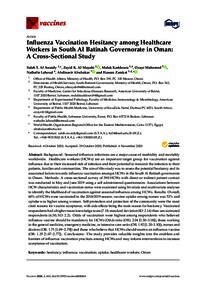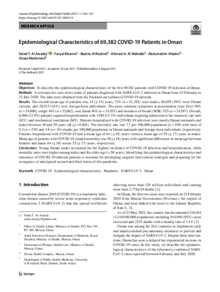Document
Progress towards a leprosy-free country : the experience of Oman.
Identifier
DOI: 10.1371/journal.pntd.0006028
Source
PLoS Neglected Tropical Diseases. v. 11, 11, e0006028
Country
United States.
Publisher
Public Library of Science.
Gregorian
2017-11-20
Language
English
Subject
English abstract
Introduction: The World Health Organization (WHO) released the Global Leprosy Strategy 2016–2020 towards a leprosy-free world. The author described the progress made towards the elimination of leprosy and suggested recommendations for the acceleration towards a Leprosy-free country according to WHO laid out criterion. Methodology: Case record review of Leprosy patients managed between the years 1992 to 2015 were registered and analyzed. Data were collected from annual reports of the Ministry of Health including demographics, classification of leprosy new cases, relapse, childhood, grades of disability (GD) and multidrug therapy (MDT) completion rates. Results: Leprosy prevalence rate declined from 1.64 to 0.09 per 10,000 population during the period 1992 and 2015 (p0.0001). Between 2005 and 2015, 77 patients were diagnosed with Leprosy as per definition and 75/77 (98%) had smear or biopsy positive. Of these, 53 (69%) cases were among foreign-born (non-national) (p0.003) and 19 (25%) were among women. Most of the leprosy cases were notified in Muscat governorate 29 (38%) and among patients between 25–44 years of age 41 (53%), followed by ≥45 years 29 (38%) and 6 (8%) were children age ≤ 14 years. Multi-bacillary (MB) cases reported 60 versus 17 for Pauci-bacillary (PB) (p 0.01), while MB was highest among both nationals (83%) and foreign-born (75%). MDT completion rate was 100% and no relapse cases were notified among nationals. The rate of new patients diagnosed with leprosy related disability was 2.3 per million population, and grade 2 disability (G2D) rate among nationals was 0.9 per million population. No disability was recorded among women or children less than 14 years within the nationals group from 2013. Almost all the foreign-born patients didn’t complete their treatment in Oman as they left the country shortly after diagnosis of leprosy due to a very short term contract, discretionary employment practices by the employers and prefer to go home to complete their treatment. Conclusion: Oman has met the elimination goals and made great strides towards becoming a leprosy-free country. However, challenges such as improving surveillance system efficiency and sensitivity for detecting timely leprosy cases, as well as foreign-born workers are still a major concerns.
ISSN
1935-2727
Category
Journal articles

